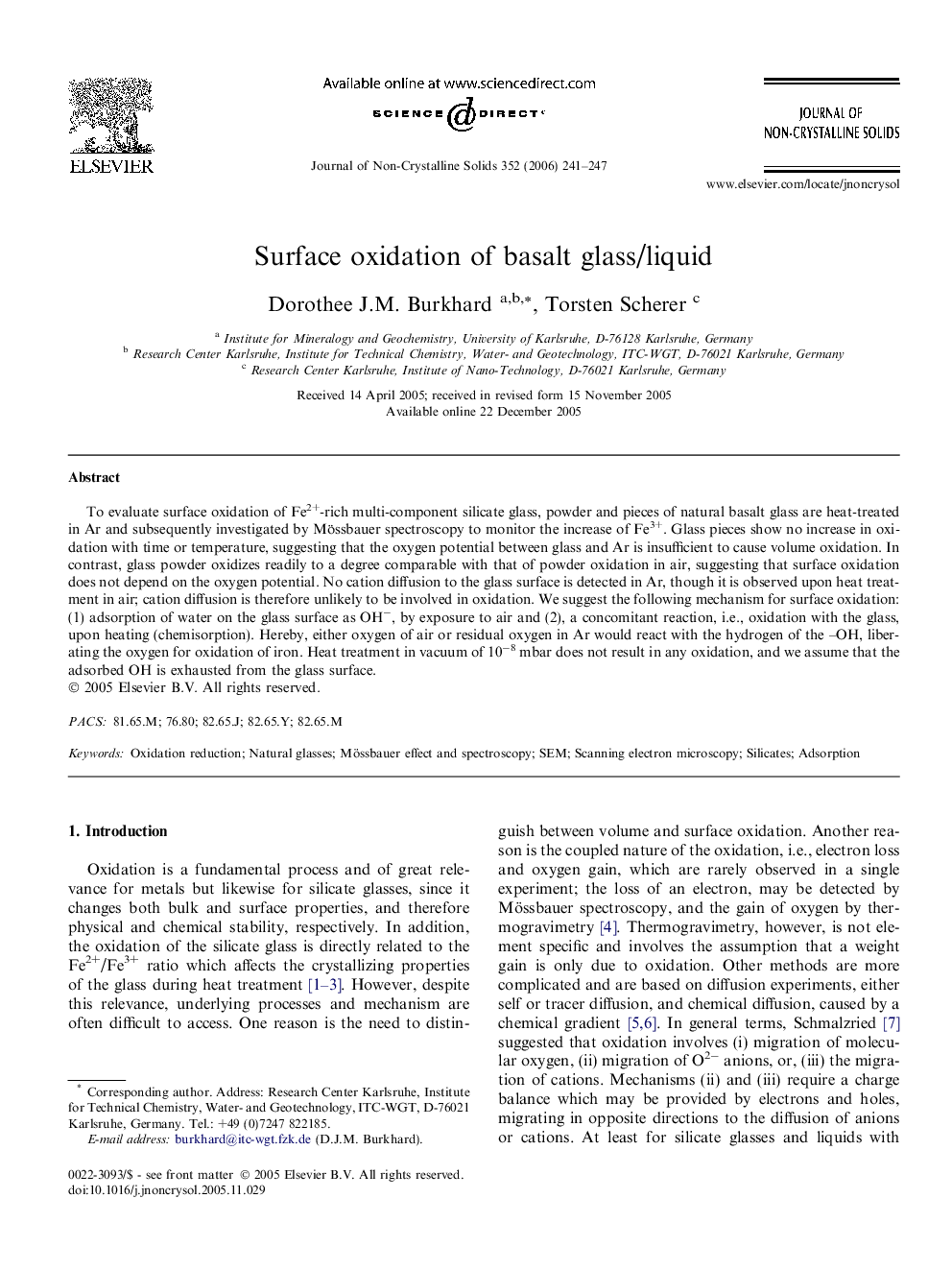| Article ID | Journal | Published Year | Pages | File Type |
|---|---|---|---|---|
| 1485971 | Journal of Non-Crystalline Solids | 2006 | 7 Pages |
Abstract
To evaluate surface oxidation of Fe2+-rich multi-component silicate glass, powder and pieces of natural basalt glass are heat-treated in Ar and subsequently investigated by Mössbauer spectroscopy to monitor the increase of Fe3+. Glass pieces show no increase in oxidation with time or temperature, suggesting that the oxygen potential between glass and Ar is insufficient to cause volume oxidation. In contrast, glass powder oxidizes readily to a degree comparable with that of powder oxidation in air, suggesting that surface oxidation does not depend on the oxygen potential. No cation diffusion to the glass surface is detected in Ar, though it is observed upon heat treatment in air; cation diffusion is therefore unlikely to be involved in oxidation. We suggest the following mechanism for surface oxidation: (1) adsorption of water on the glass surface as OHâ, by exposure to air and (2), a concomitant reaction, i.e., oxidation with the glass, upon heating (chemisorption). Hereby, either oxygen of air or residual oxygen in Ar would react with the hydrogen of the -OH, liberating the oxygen for oxidation of iron. Heat treatment in vacuum of 10â8Â mbar does not result in any oxidation, and we assume that the adsorbed OH is exhausted from the glass surface.
Keywords
Related Topics
Physical Sciences and Engineering
Materials Science
Ceramics and Composites
Authors
Dorothee J.M. Burkhard, Torsten Scherer,
